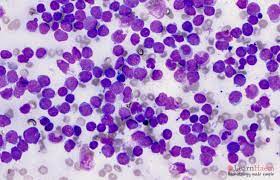About
Acute cholecystitis
Acute
cholecystitis is a condition where there is inflammation of the gallbladder,
typically caused by the blockage of the cystic duct by gallstones. The
gallbladder is a small, pear-shaped organ located just below the liver that
stores bile, a digestive fluid produced by the liver. When the gallbladder
becomes inflamed, it can cause severe abdominal pain, fever, and nausea.
The symptoms of acute cholecystitis
usually develop suddenly and may include:
·
Severe abdominal pain, especially
in the upper right part of the abdomen
·
Nausea and vomiting
·
Fever
·
Jaundice (yellowing of the skin and
eyes)
·
Loss of appetite
·
Tenderness in the abdomen,
particularly over the gallbladder
If you suspect you have acute
cholecystitis, it is important to seek medical attention promptly, as the
condition can lead to serious complications such as a ruptured gallbladder or
infection. Treatment may involve antibiotics, pain relief, and in severe cases,
surgical removal of the gallbladder.
What causes acute cholecystitis?
Acute
cholecystitis is most commonly caused by gallstones, which are small, hard
deposits that form in the gallbladder. When a gallstone becomes lodged in the
cystic duct, it can block the flow of bile, causing inflammation and swelling
of the gallbladder. This can lead to the symptoms of acute cholecystitis,
including severe abdominal pain, fever, and nausea.
Other less common causes of acute
cholecystitis include:
· Tumors or growths in the
gallbladder
· Infection in the gallbladder
· Trauma or injury to the gallbladder
· Biliary sludge, which is a mixture
of cholesterol and other substances that can form in the gallbladder
Risk factors for developing acute
cholecystitis include being female, over the age of 40, obese, having a family
history of gallstones or gallbladder disease, and having certain medical
conditions such as diabetes or cirrhosis of the liver.
Diagnosing cholecystitis
The diagnosis of cholecystitis
typically involves a combination of medical history, physical examination, and
imaging tests. The following are some of the diagnostic tests commonly used to
diagnose cholecystitis:
1. Medical history: The doctor will ask you about your symptoms, medical history, and
any medications you are taking.
2. Physical examination: The doctor will perform a physical examination to check for signs
of inflammation, tenderness, and pain in the upper right part of your abdomen.
3. Blood tests: Blood tests can be
done to check for signs of infection, inflammation, and liver function.
4. Ultrasound: An ultrasound is a non-invasive imaging test that uses sound
waves to create images of the gallbladder. It is often the first imaging test
performed in the diagnosis of cholecystitis.
5. CT scan: A CT scan is a more detailed imaging test that can provide a more
detailed picture of the gallbladder and surrounding structures.
6. HIDA scan: A HIDA scan is a nuclear medicine test that can evaluate the
function of the gallbladder and detect any blockages or inflammation.
If you are experiencing symptoms of cholecystitis, it is important to seek medical attention promptly to determine the cause of your symptoms and receive appropriate treatment.
Treating acute cholecystitis
The treatment of acute
cholecystitis depends on the severity of the condition and may involve medical
management or surgical intervention. Here are some common treatments:
1. Nonsurgical Treatment: Mild cases of cholecystitis may be treated with medications to
control pain and inflammation, and antibiotics to treat any underlying infection.
Nonsurgical treatment can also be used to stabilize patients who are not fit
for surgery or those with milder symptoms.
2. Surgical Treatment: Surgical intervention is often recommended for severe or
recurrent cases of acute cholecystitis. The most common surgery for
cholecystitis is laparoscopic cholecystectomy, a minimally invasive surgical
procedure in which the gallbladder is removed using small incisions in the
abdomen. Open cholecystectomy, a more invasive surgical procedure, may be
recommended in cases where laparoscopic surgery is not feasible or in cases of
severe inflammation.
3. Diet modification: In addition to medical or surgical treatment, dietary changes may
also be recommended to manage symptoms. A low-fat diet is often recommended to
reduce the workload of the gallbladder.
It is important to seek medical attention promptly if you suspect you have acute cholecystitis, as the condition can lead to serious complications such as a ruptured gallbladder or infection. The treatment plan will depend on the severity of your symptoms and the underlying cause of your condition, and will be determined by your healthcare provider.
Preventing acute cholecystitis
While it is not always possible to prevent acute cholecystitis,
there are some measures you can take to reduce your risk of developing the
condition:
1. Maintain a healthy weight: Being overweight or
obese can increase your risk of developing gallstones, which are a common cause
of cholecystitis. Maintaining a healthy weight through regular exercise and a
healthy diet can help reduce your risk.
2. Eat a healthy diet: Eating a diet that
is low in fat and high in fiber can help reduce your risk of developing
gallstones. Foods that are high in cholesterol or saturated fats should be
avoided or consumed in moderation.
3. Stay hydrated: Drinking plenty of
water can help prevent the formation of gallstones, as well as reduce the risk
of inflammation and infection in the gallbladder.
4. Manage underlying medical conditions: Certain medical
conditions such as diabetes or liver disease can increase your risk of
developing gallstones and cholecystitis. Managing these conditions through
regular medical care and treatment can help reduce your risk.
5. Avoid rapid weight loss: Rapid weight loss,
such as that caused by crash dieting or bariatric surgery, can increase the
risk of developing gallstones and cholecystitis. Gradual weight loss through a
healthy diet and exercise is recommended.
It is important to talk to your healthcare provider about any concerns you may have about your risk of developing cholecystitis and to follow their recommendations for preventive measures.
























.jpg)

